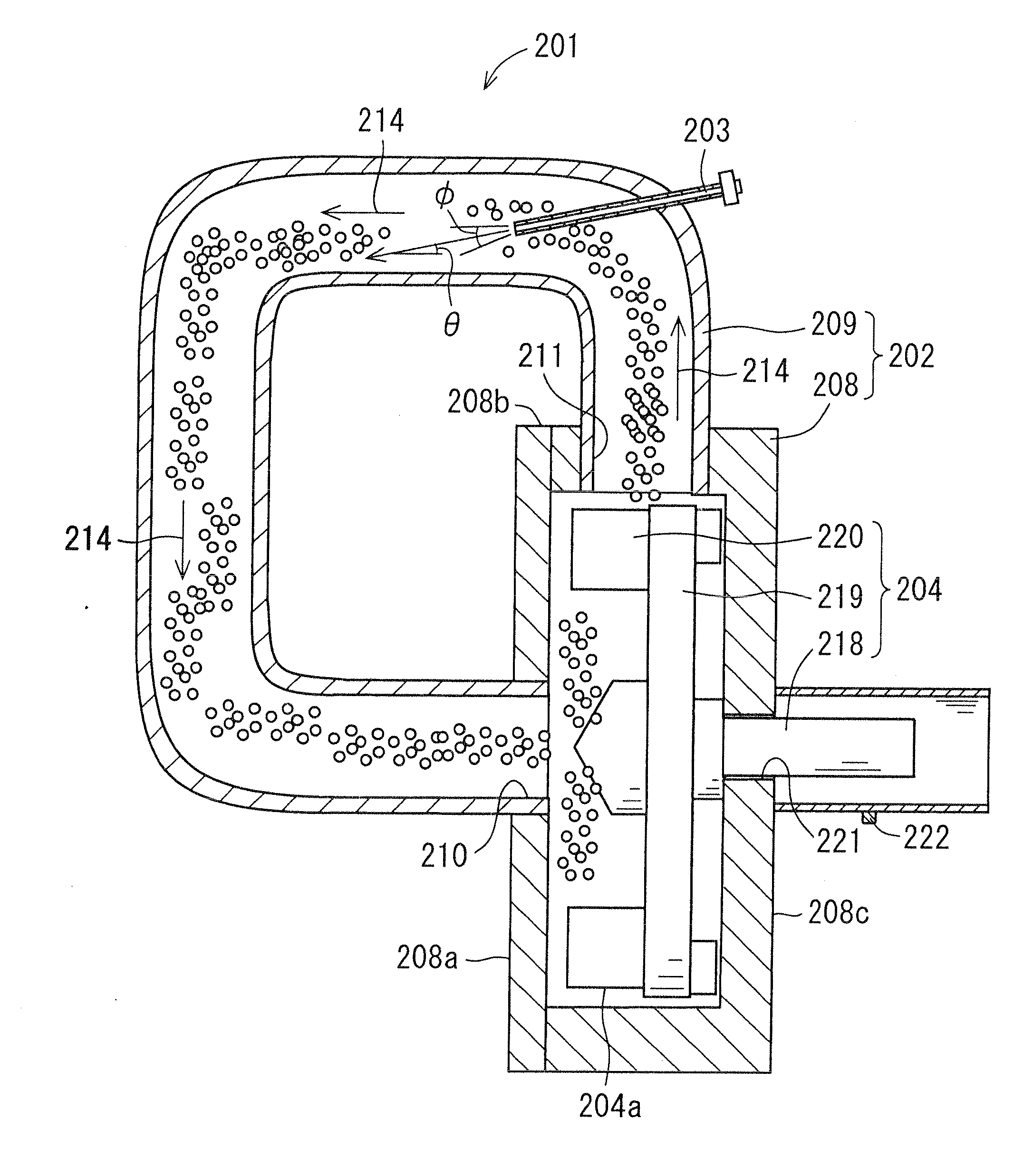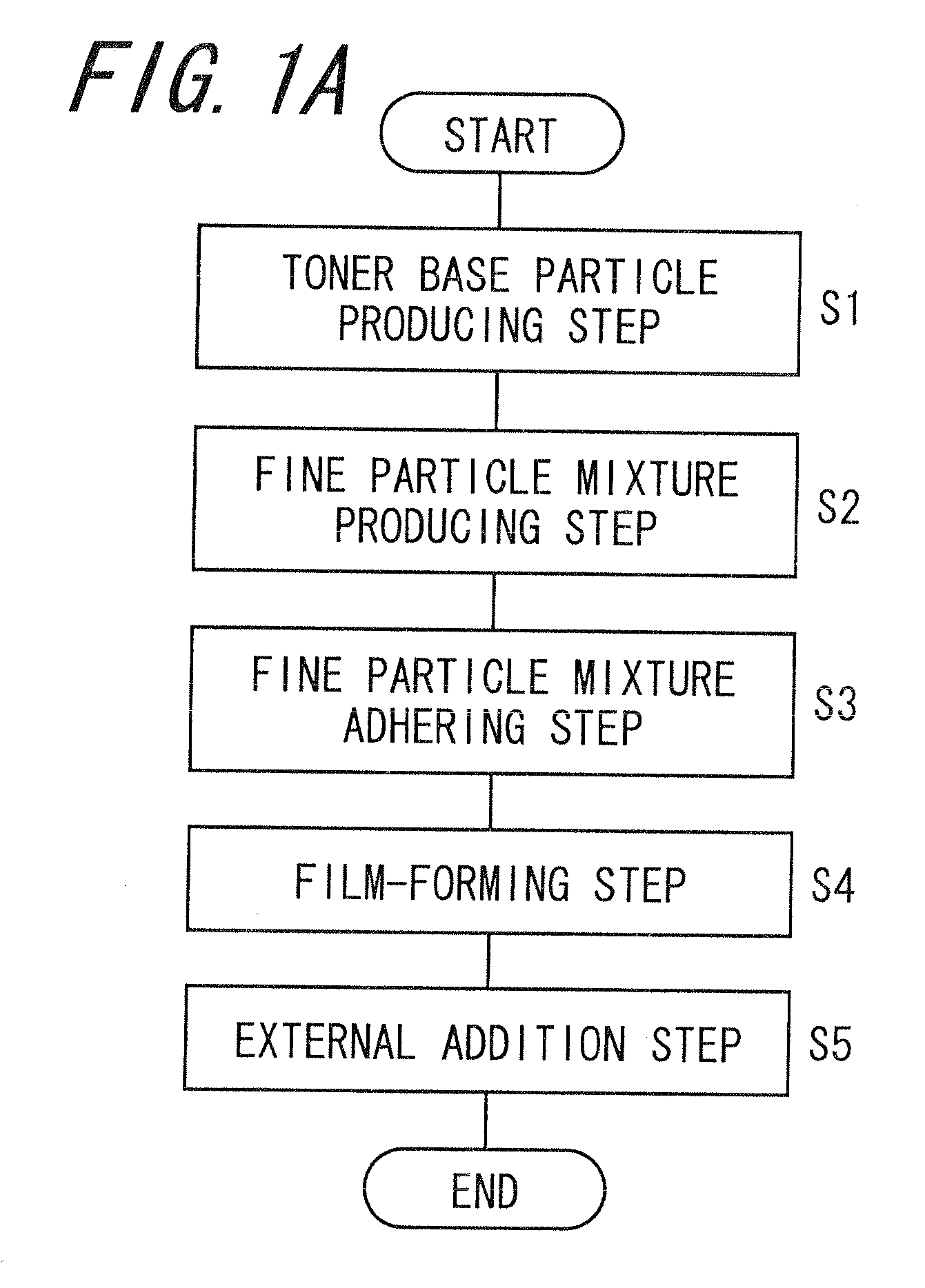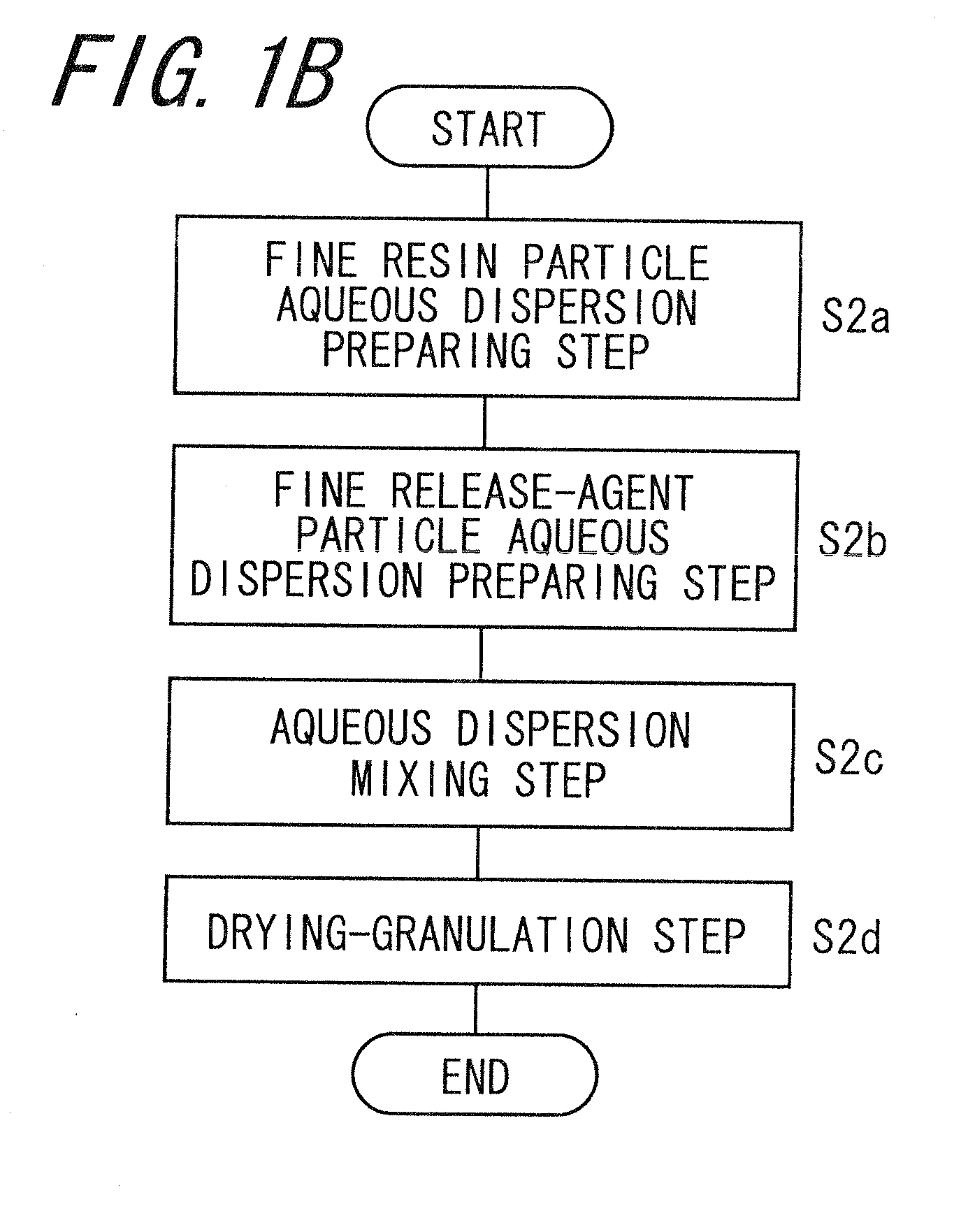Capsule toner, method of manufacturing the same, and two-component developer
a technology of capsule toner and manufacturing method, which is applied in the field of capsule toner, a method of manufacturing the same, and a two-component developer, can solve the problems of deteriorating toner flowability, difficult to render the surface conditions of toner particles uniform, and lack of uniform surface composition
- Summary
- Abstract
- Description
- Claims
- Application Information
AI Technical Summary
Benefits of technology
Problems solved by technology
Method used
Image
Examples
example 1
[0198]
[Toner base particle producing step S1]Polyester resin (trade name: Tafton, manufactured88partsby KAO Corporation, glass transition temperatureof 60° C. and softening temperature of 138° C.)Colorant (copper phthalocyanine, C.I. Pigment5partsBlue 15:3)Release agent (Carnauba wax manufactured by Toa5partsKasei Co., Ltd., melting point of 82° C.)Charge control agent (trade name: BONTRON E-84,2partsmanufactured by Orient Chemical Industries, Ltd.)
[0199]The above raw materials were mixed together for dispersion for 3 minutes by Henschel Mixer, and the resultant admixture was melt-kneaded for dispersion by using a twin-screw extruder (trade name: Model PCM-30, manufactured by Ikegai, Ltd.). The twin-screw extruder was operated under conditions where a cylinder setting temperature is 110° C., the number of barrel revolutions was 300 rpm, and a raw-material supply rate was 20 kg / hr. The resultant toner melt-kneaded product was cooled down by a cooling belt, and was whereafter coarsely...
example 2
[0211]There was obtained an aqueous dispersion W2 (solid content concentration: 5%) of fine release-agent particles (volume average particle size: 300 nm, melting-point peak temperature: 90° C., onset temperature: 82° C.) basically in the same manner as in the case of Example 1, except that, in the fine particle mixture producing step S2, surfactant and distilled water were put in an amount of 1.2 g and in an amount of 1899 g, respectively, at the time of preparation of the aqueous dispersion of the fine release-agent particles. There was also obtained a fine particle mixture aqueous dispersion 2 (the ratio of the fine release-agent particles to the fine resin particles: 5% by weight) basically in the same manner as in the case of Example 1, except that 100 g of the aqueous dispersion W2 of the fine release-agent particles 2 was used in lieu of the aqueous dispersion W1 of the fine release-agent particles 1. A fine particle mixture 2 was produced from the thus obtained fine particle...
example 3
[0213]There was obtained a fine particle mixture aqueous dispersion 3 (the ratio of the fine release-agent particles to the fine resin particles: 3% by weight) basically in the same manner as in the case of Example 1, except that, in the fine particle mixture producing step S2, the aqueous dispersion W1 of the fine release-agent particles 1 was put in an amount of 60 g. A fine particle mixture 3 was produced from the fine particle mixture aqueous dispersion 3.
[0214]There was obtained a capsule toner of Example 3 (volume average particle size: 7.0 μm, coefficient of variation: 23, dispersion particle size of release agent: 0.1 μm to 0.3 μm) basically in the same manner as in the case of Example 1, except that, in the fine particle mixture adhering step S3, 7.73 parts of the fine particle mixture 3 was used in lieu of the fine particle mixture 1.
PUM
 Login to View More
Login to View More Abstract
Description
Claims
Application Information
 Login to View More
Login to View More - R&D
- Intellectual Property
- Life Sciences
- Materials
- Tech Scout
- Unparalleled Data Quality
- Higher Quality Content
- 60% Fewer Hallucinations
Browse by: Latest US Patents, China's latest patents, Technical Efficacy Thesaurus, Application Domain, Technology Topic, Popular Technical Reports.
© 2025 PatSnap. All rights reserved.Legal|Privacy policy|Modern Slavery Act Transparency Statement|Sitemap|About US| Contact US: help@patsnap.com



